Artists Using Fountain Pens

One thing we see a lot of in the community are artists using fountain pens. We love seeing the amazing art people create. It's absolutely mind-blowing to see what people can make with a blank piece of paper and a pen. Here we've gathered 12 artists who use pens to create art and asked them what makes fountain pens such a great tool.
The Artists
@PensiveCandy
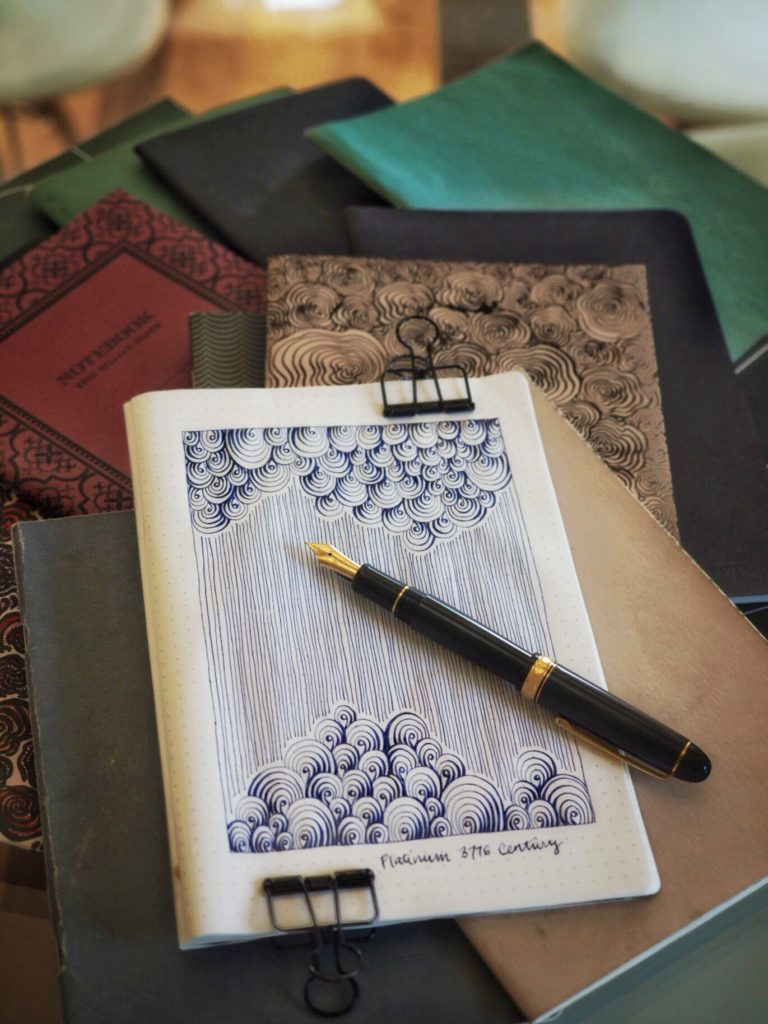
"My name is Candace and I live in Sydney, Australia. I'm a long-time fountain pen user, having been introduced to fountain pens at the age of 8 or 9, but I only just started using them for art and drawing last year. I share my creations on Instagram under the handle @pensivecandy.
I love using fountain pens for art for many of the same reasons I enjoy using them for daily office work. Fountain pens feel much nicer in the hand from the shape of the grip and the body to the way the ink flows onto the paper, than say, a fibre-tipped pen which I know many use quite happily. The drawing experience is smooth and feels effortless when I have the right fountain pen in my hand. I tend to gravitate toward pens that come with springy or flexible nibs because they offer line variation, which makes the result so much more interesting.
For someone who is thinking of using fountain pens to create art, my top tip would be to pair the pen of your choice with fountain pen-friendly paper – my go-to is Tomoe River (I've bought so many of Goulet Pens' A5 notebooks of this paper) – because if you don't use the right paper, you'll be disappointed and discouraged to find your creation has either feathered or bled through thanks to unsuitable paper."
See more here: Instagram
@abillustrator

"My name is Andrew Banks and I am a Chicago based artist, freelance illustrator, and owner of Andrew Banks Illustration. Whether I am choosing the right ink, nib size, pen grip, or weight, fountain pens offer a variety of options that help me achieve desired results in my work. I drew the majority of this Chicago Skyline with a TWSBI Eco with an EF nib, filled with Platinum Carbon Black ink. The Eco is a nice light pen even when fully inked which makes it really comfortable for longer drawing sessions. The EF nib is really precise, yet smooth at the same time, and allows me to incorporate fine details and texturing. The pen's feed has a great flow of ink, and its large body provides a large supply of ink which is also especially helpful for long drawings sessions. While the Eco with an EF nib was used for the majority of this drawing, I also used other pens, including. Lamy safaris with M and B nibs and even brush pens to achieve varying line weights and textures throughout the piece.
Platinum Carbon Black ink is one of my go to inks for these types of drawings. Carbon Black is a pretty fast drying ink. While being a very dark black, its pigmentation also provides a nice, subtle textural quality. Carbon Black is also great for its archivability being waterproof, permanent and lightfast. I love these qualities because when I use Carbon Black ink I feel confident providing my clients with art made with products that will last a lifetime. Artists looking to use Platinum Carbon Black ink should clean their pens out every 3-4 days. After multiple, prolonged drawing sessions, you will begin to notice slight buildup of pigmentation (and paper fibers) on you nib. This is completely normal; however, it can begin to impact the clarity of your line work if you are not careful."
Anthony Holden

"I like a good amount of line variation in my cartoons, so a flexible nib is important to me. My favorite nibs are Pilot's Soft Extra Fine (on my resin Falcon) and Pilot's FA nib (on the Custom 912). The Custom 912 can be a little finicky, so the Falcon is my go-to pen for drawing. Noodler's also makes a couple of more affordable, steel nib options (the Ahab or Konrad) that also flex without breaking the bank. Have fun making some drawings with wonderful, expressive lines!"
Brenda Swenson Watercolors

"I have been sketching for twenty plus years. Rarely do I use a pencil. Long ago I realized drawing with pen and ink requires I spend more time looking and observing. When I put the pen to paper I do it with a greater sense of awareness. I spent more time looking at my subject. Since I can't erase I slow down and pay more attention to how I'm holding the pen, the pressure, the speed, the ink flow… All of these things mean I'm more involved with the experience. I draw slower and with a greater awareness.
About seven years ago I started exploring fountain pens. I wanted a pen that would do more than simply get the job done. I had grown tired of cheap disposable pens and wanted something that was enjoyable to hold, look at and a pleasure to sketch with. Little did I know how big the fountain pen world was…I was lost! That's when I stumbled upon Goulet Pens. At last I was able to make sense of all the terms, option, nibs, inks…"
See more here: Website
@Hillkurtz

"I love using fountain pens for my work because of the expressive quality of the line, there's just nothing like it. I am also attracted to the idea of creating something that's somewhat timeless in feel. My sketches have a certain nostalgia to them, and drawing with a fountain pen connects me to all those great artist who sketched in a similar way decades or even centuries ago.
A tip I have for artist, especially all those lefties out there (like me) – grab whatever fountain pen you can get your hands on and draw with no fear of smudging! I've always loved the idea of fountain pens, but couldn't use them because I'm left-handed. But with sketching, all those pesky writing rules don't apply. You are allowed to draw from right to left! Drag that pen across the page with beautifully fluid movements, and create something amazing!"
See more here: Instagram
@Krismordecai

"I love working with fountain pens because they provide a completely different user experience than working with a disposable pen. I love the wonderful feeling of liquid ink flowing off the nib and onto the page. I'm kind of addicted to that sensory experience. I also love the way my fountain pens feel in my hand. Since I started using fountain pens, my hands never seem to cramp up or tire anymore, even after writing or drawing for hours. Finally, a disposable pen is intended to wear out and it's something that you can't get too attached to, by design. But a fountain pen is a tool intended for years of use, and I love the relationships I've built with my pens over time.
A tip for artists who would like to use them:
Build community! Brian likes to refer to the 'fountain pen community' in his videos, and I know some people who aren't fountain pen users might think that sounds a bit strange, but this is a very real thing! Fountain pen users are so enthusiastic about their tools that we generally all love to talk to people about them, ask each other questions and give answers. Similarly, there are so many amazing and supportive artists and sketchers doing meet ups and connecting on social networks, and these communities are very generous with their support. My own community regularly gives me inspiration, teaches me skills, answers my questions, and encourages me to keep going.
Or, for those looking for a more 'concrete' tip: With most pens you can turn the nib upside down to get a finer line when you're drawing."
See more here: Instagram
Liz Steel
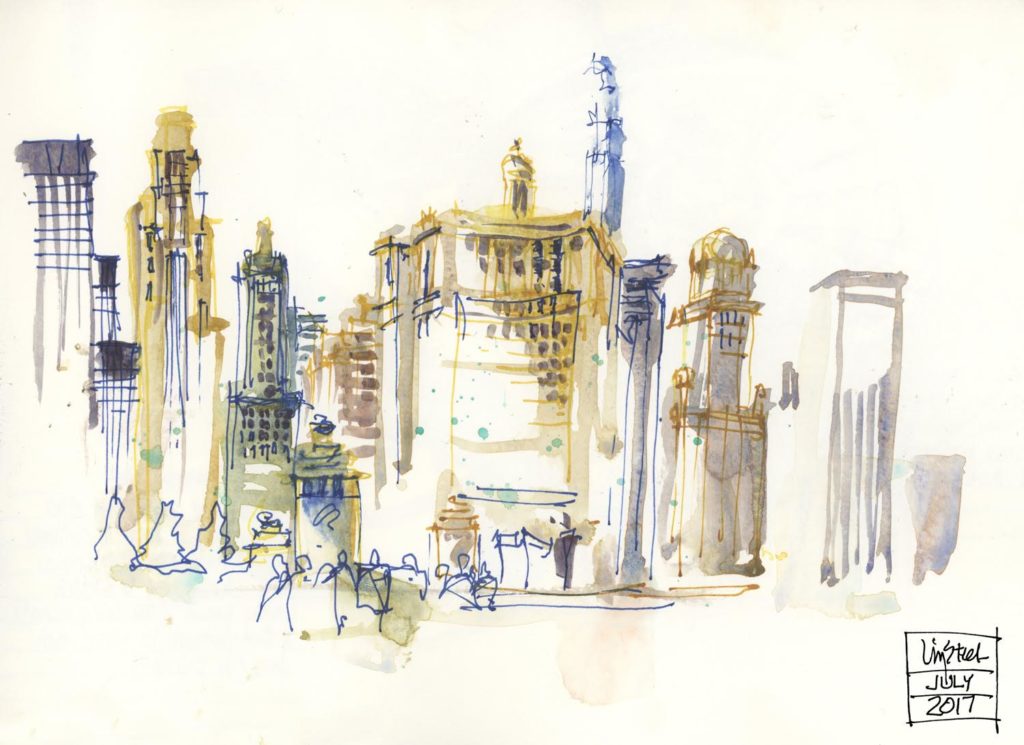
"I love sketching with fountain pens because the flow of the ink suits my loose style. I also love using a few different pens with different inks as this increases the fun, particularly when I am constantly switching between linework and paint.
To work this way all you need to do is to pick two or more different fountain pens and then start sketching - maybe with a stroke of paint in the most important part of the scene. Then switch to one of your fountain pens and draw for a little while before changing to another pen. Then go back to paint and continue mixing it up! It sounds a little crazy but it will result in a really expressive sketch!"
@Jamisonodone

"I'm an author/illustrator of Graphic Novels and Children's books. An obsessive drawer. A professor of Illustration at Frostburg State University in Maryland and a devout fountain pen user. My books can be found in stores and by searching my name on Amazon or any web store.
The reason I use fountain pens is because I feel they give my work the permanence that I desire. The ink won't fade and I can control the amount that I have without worry of running out. Also, I feel the reward of accomplishment whenever I complete a book and when I'm actually making the work though, (which takes months of my life at a time) I like to have a tool that I also enjoy using and holding in my hand for those months. I've only gotten this feel with a fountain pen-- of all the tools I've used over the years."
See more here: Instagram
@j._.n

"I like using fountain pens for art because it has a consistent flow of ink, I am able to choose the ink I use, and the thicker line forces me to find simpler ways of communicating details. The pen's comfortable design and eye-catching appearance also makes drawing more enjoyable.
My best tip for artists who want to use these pens for art:
I find that fountain pens are eco-friendly as it's reused and refilled with ink rather than thrown in the garbage after use, so I recommend it for environmentally conscious people. I also recommend them to artists who have experimented with many pens and knows the exact characteristics they like so they could cater this to a longer-lasting, better looking fountain pen. And for me personally, I always feel bad throwing away a pen after finishing it because it feels like discarding something that helped me in my art journey. But with a fountain pen, this problem is fixed."
See more here: Instagram
@Pinot

"The main reason why I love using fountain pen is the experience. The stroke thickness & black intensity of the ink is similar to digital tool. I use Namiki Falcon from Pilot & Noodler's Ahab, both has flex nib to create bold & thin line."
@parkablogs

"The fountain pen I used is the Pelikan M100 which is one of my favourite pens because it has a huge ink capacity. I like to use fountain pens because they are economical in the long run as long as you use bottled inks. You also have more control over the type of ink. For my watercolor sketches, I use Noodler's Bulletproof ink which is waterproof when dry although on some paper it may not be as waterproof."
See more here: Instagram
@MattiasInk
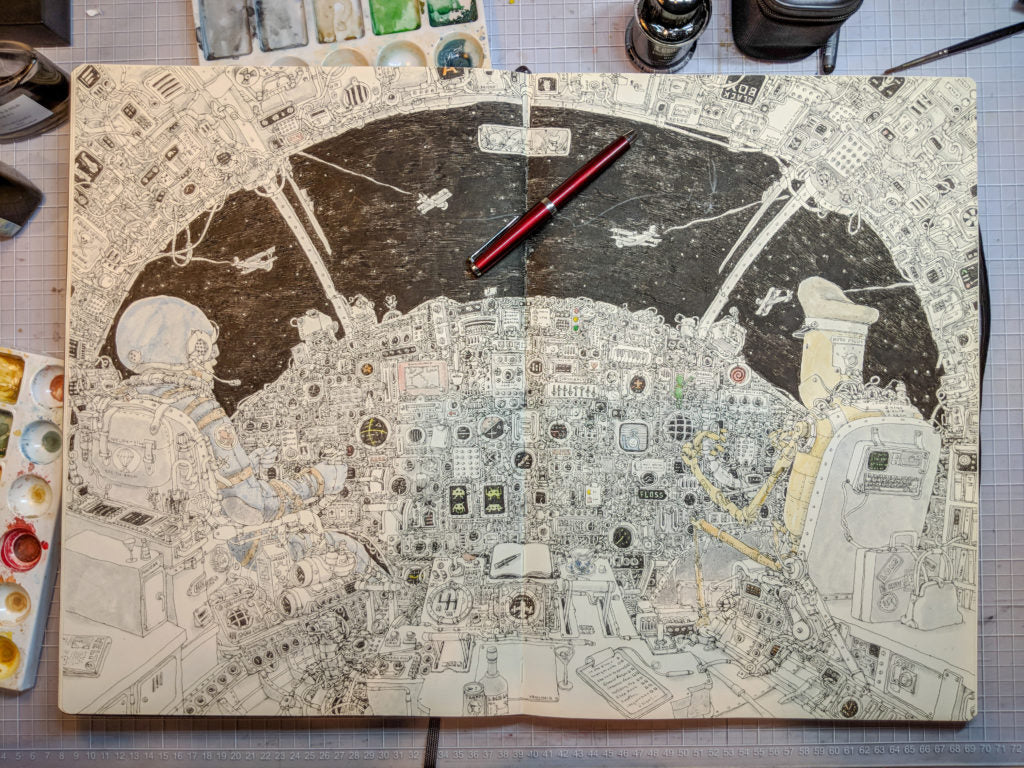
"I've always been into the black and white drawing tradition, and when I got down to start drawing I just chose ink as a medium. The first couple of years I used traditional dip pens but then I discovered all the advantages of fountain pens (no need for constant dipping, more freedom of drawing direction, more portable) and have never looked back. I also state that a fountain pen has a lot of advantages over for example technical pens and fine liners as it is possible to draw with a much more slanted angle making it perfect for a companion to a sketchbook.
As for tips, I would recommend not to choose an expensive pen first, I tend to say that pens like the Platinum-Carbon pen are a good start to get a feel what drawing with a fountain pen is. Fountain pens might be expensive to buy especially when you go for a pen with a gold nib (which I prefer especially if you would like the added flex it gives to the line) but handled properly they can last a lifetime."
The Goulet Team
We couldn't be more proud of our Goulet team and the beautiful artwork they've created using fountain pens. Here are a few examples of their work:
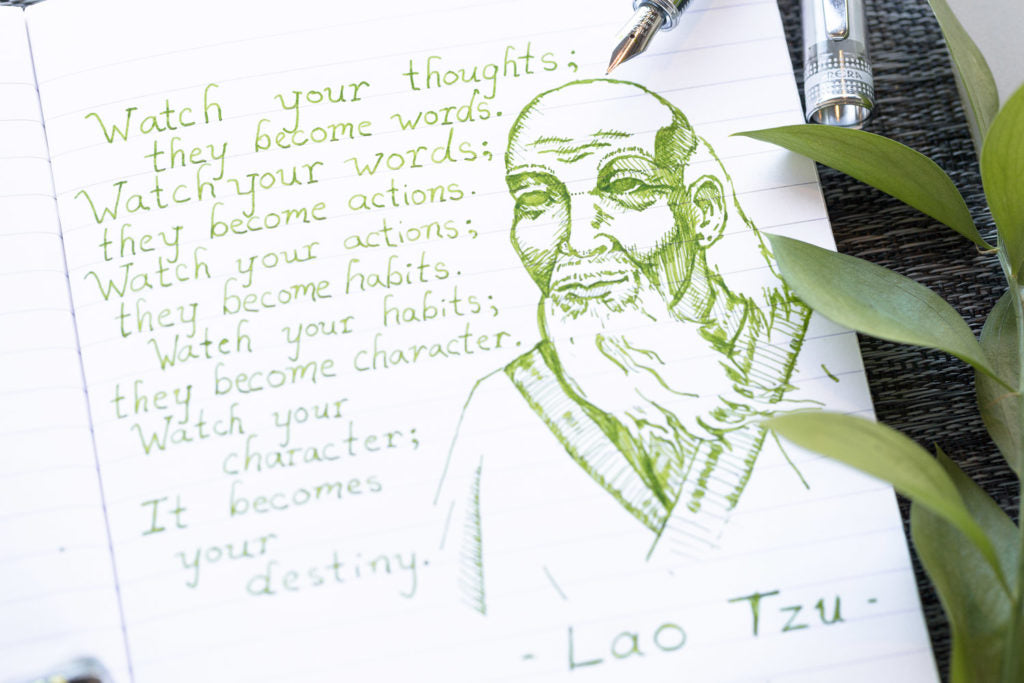

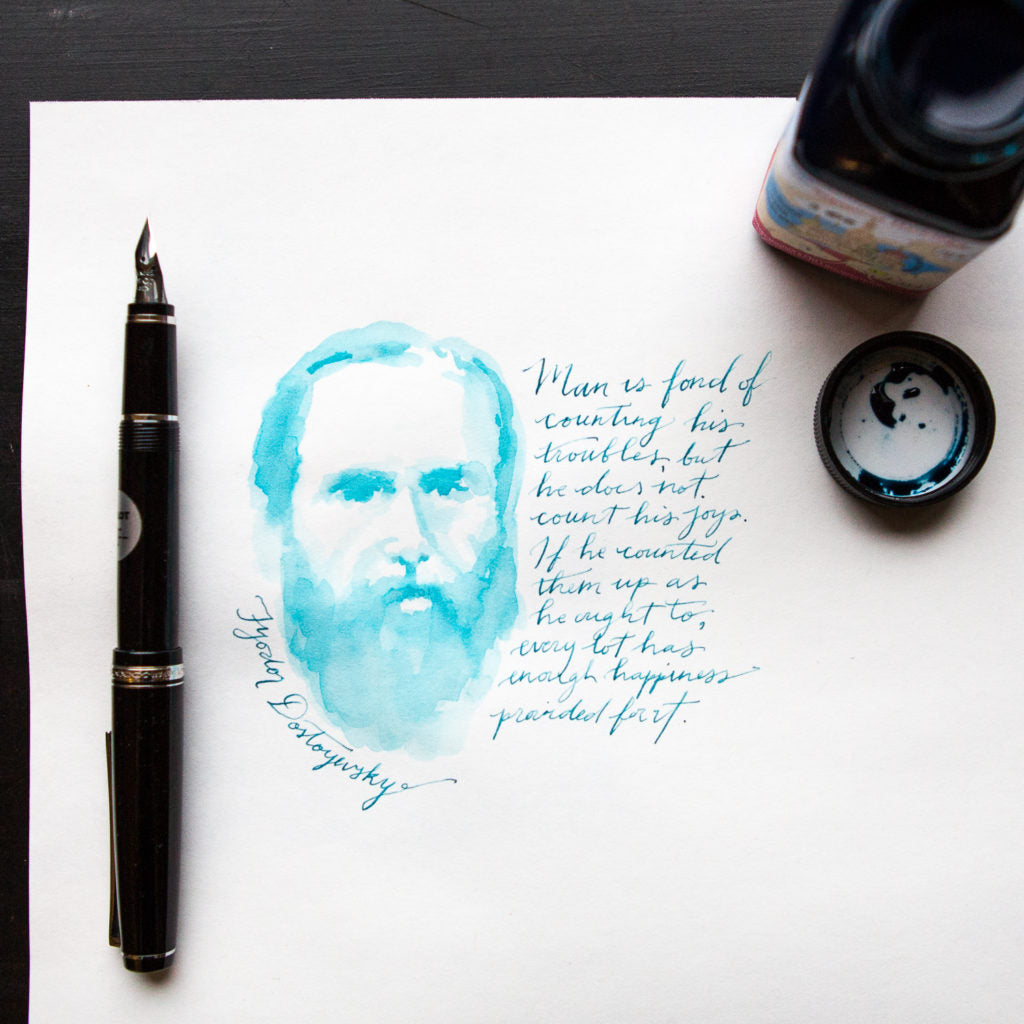
If you're inspired and need a pen, don't forget to take a look at our Fountain Pens for Sketching shopping guide!






























